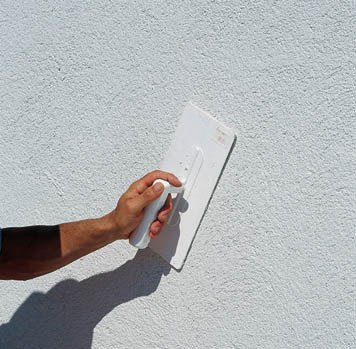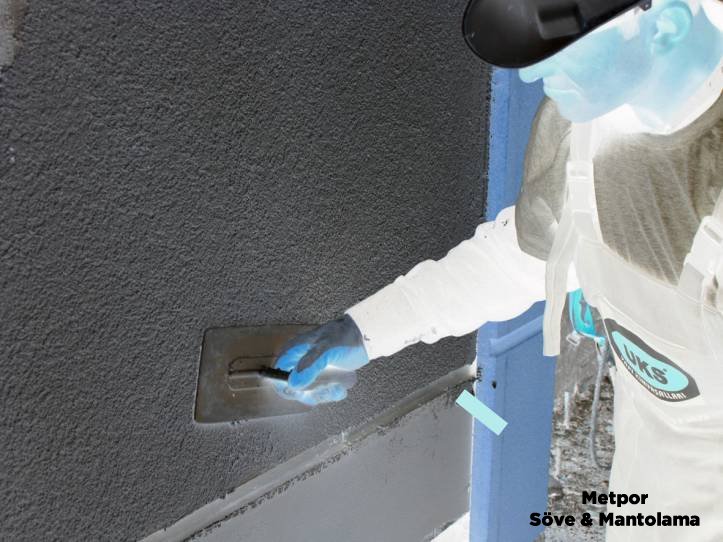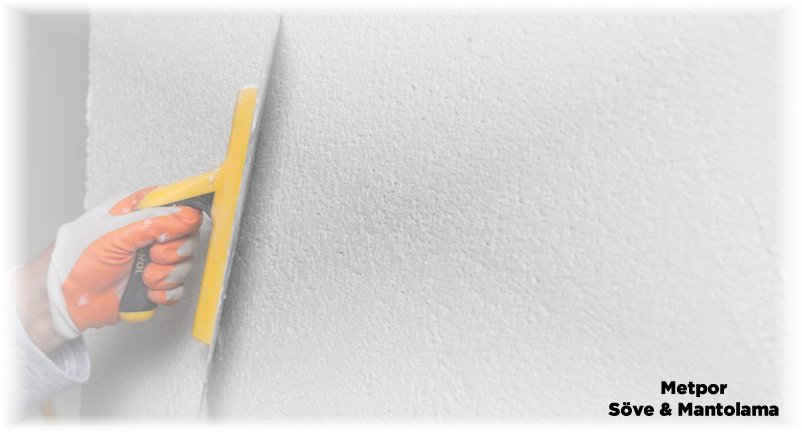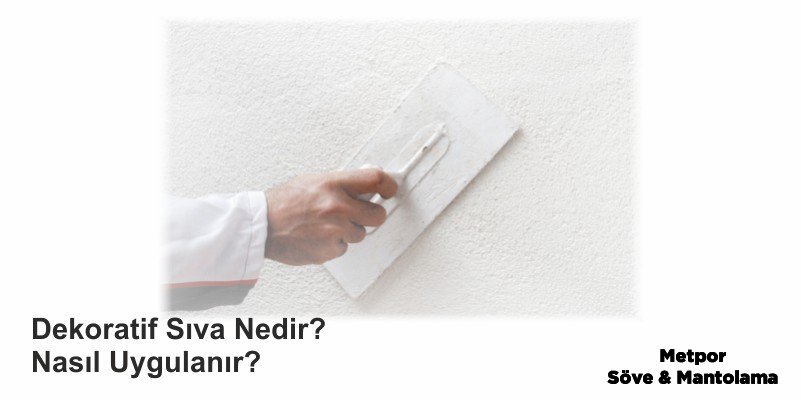What is Decorative Plaster in Exterior Sheathing Application, How is it Applied?
Decorative Plaster is a cement-based material like sheathing plaster. It is applied to make the façade look more decorative after plastering and at the same time it closes the faults in the plaster. It should not be applied below +5 o degrees and above +35 o degrees.
Decorative Plaster Definition:
It is a cement-based, polymer-added, water-repellent, top-coat decorative coating material on exteriors.
Usage Areas of Decorative Plaster in Sheathing:
It is used as a decorative coating on exterior thermal insulation systems, on interior and exterior surfaces where durability and decorative appearance are aimed.

General Properties of Decorative Plaster Materials:
Decorative Grained Plaster Materials show high resistance against all kinds of climatic conditions. It is long lasting. It does not burn and does not swell. After application, it creates a homogeneous decorative image. With the help of its texture, the plaster covers the steel trowel traces on the surface. It has vapor permeability. It is the most suitable exterior coating for thermal insulation systems. It can be painted over.
How is Decorative Plaster Material Prepared?
25 kg of material is mixed with 6 - 6.5 liters of water in a clean container environment with a slow speed mixer. The mixing process is continued until the mixture becomes homogeneous. The prepared mixture is kept for 5 minutes and mixed again.
Preparation of the Surface to be Decorative Plaster
The plaster surface must be clean, dry and durable. Damaged surfaces should be repaired with repair mortar. If the surface to be coated is a dusting surface, it is diluted 1/3 and primed by applying it to the dusting surface with a brush or roller.

Application Method of Decorative Plaster
Prepared homogeneous mixture is applied to the surface smoothly with a steel trowel. 5 minutes after the Fine Grained Decorative Plaster or Coarse Grain Decorative Plaster is homogeneously applied to the surface, a pattern should be given with circular movements with a flat plastic trowel. The surface of the plastic trowel should be cleaned frequently. It should not be applied in heavy rains. If desired, it can be painted with exterior paint. It is recommended to wait 7 days under normal conditions after the program in order to paint over it.

How is Decorative Plaster Made?
After the Fine Grained Decorative Plaster or Coarse Grained Decorative Plaster material is applied to the surface of the façade, a pattern is given with circular movements with a trowel called clover. It is very important not to make any additions while decorative plaster is applied, and to lower the facade from top to bottom at once. Otherwise, traces and waves will form on your front. It has been observed that the sun hits the façade directly and waves occur in the productions made in very hot weather.
As there is a primer before painting on decorative plaster , there are also primers before decorative plaster.
Decorative plaster is produced in different thicknesses. Decorative plaster is available from 0.5 mm to 3.5 mm. As the mm thickness increases, the stone thickness (female) inside the decorative plaster increases. They are known as Fine Grain Decorative Plaster or Coarse Grain Decorative Plaster materials. In the application of decorative ready-made sheathing, the jamb profiles do not require decorative plaster application since they have their own special coating.
While making exterior sheathing application, the visuality of the buildings is also considered today. For this reason , decorative jacketing application methods are preferred. When it comes to exterior cladding models, it is seen that there are different decorative exterior cladding materials.







Metpor
info@metpordekor.com
Okunma Sayısı : 164